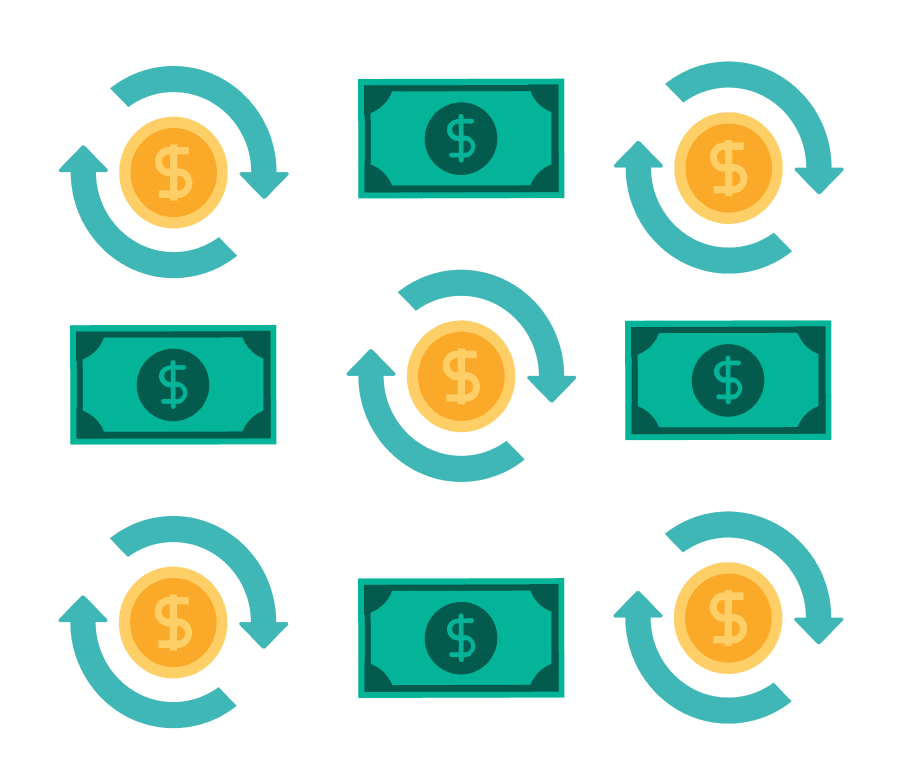Homeowners insurance coverage usually comes in two forms — actual cash value (ACV) coverage or replacement cost value (RCV) coverage.
ACV coverage reimburses you for the cost to repair or replace items damaged by a covered event. Your insurer pays you for the item’s value today, factoring in depreciation.
With RCV coverage, your insurer will still pay you the actual cash value for the damaged item, but you can recover the depreciation costs after you replace the item and submit proof to your insurer. This coverage could help lower your out-of-pocket costs when replacing items or making repairs after a covered event.
Here’s what you need to know about recoverable depreciation:
- What is recoverable depreciation?
- Non-recoverable depreciation
- How to calculate recoverable depreciation
- How does recoverable depreciation affect your claim?
- How to submit a recoverable depreciation claim<
- Who gets the recoverable depreciation check?
- Recoverable depreciation time limit
What is recoverable depreciation?
Recoverable depreciation is the difference between an item’s replacement cost and its actual cash value. ACV is how much an item or property is worth today after accounting for depreciation.
Recoverable depreciation = Replacement cost - Actual cash value
Say you bought a $2,000 sound system three years ago, and it has a useful life of five years, resulting in 20% depreciation each year.
If the stereo is damaged in a fire, you don’t get $2,000. The insurer would consider that it’s depreciated 60% ($1,200) over the three years you had it.
The stereo’s actual cash value today would be $800 ($2,000 replacement cost minus $1,200 in depreciation). With ACV homeowners insurance coverage, you’d get $800 minus your deductible for the claim. Your deductible should be listed on your insurance declarations page.
If you have a policy with RCV coverage, the $1,200 difference between the replacement cost ($2,000) and cash value ($800) may be recoverable. Typically, you get the actual cash value first in a check, and the check for recoverable depreciation — $1,200 in this case — would come later after submitting receipts to prove you replaced the item.
Learn: How to Change Homeowners Insurance
Non-recoverable depreciation
Non-recoverable depreciation is depreciation that can’t be reimbursed. Examples of situations where depreciation may not be recoverable include damage to items on your roof, appliances, carpeting, or personal property like memorabilia or collectibles. That’s because some RCV policies may have exceptions for fragile items or items hard to calculate a value on. And if damage is caused by certain excluded perils, the deprecation may also not be recoverable.
Claims payouts for these items may be calculated under the actual cash value rule, even if you have RCV coverage. Check your insurance policy and speak to an insurance agent to confirm where non-recoverable depreciation might affect you.
For example: Perhaps you have a carpet that costs $5,000 with a useful life of five years. If a storm comes and damages the carpet in year two, the $2,000 in depreciation over those two years might be considered non-recoverable, and your homeowners insurance claim payout would instead equal $3,000 minus your deductible.
Credible makes finding a great insurance policy easy. You can compare custom fit-options to find home coverage that best suits your needs.
Compare home insurance from top carriers
- Fully digital experience — Fill out all of your insurance forms online, no phone call required!
- Top-rated carriers — Choose from a mix of highly reputable national and regional home insurance carriers.
- Data privacy — We don’t sell your information to third parties, and you won’t receive any spam phone calls from us.
How to calculate recoverable depreciation
You can calculate recoverable depreciation by subtracting depreciation each year through the useful life of an item.
First, take the replacement cost and divide it by how many years the item is considered useful. This will give you the amount of depreciation to deduct each year that may be recovered.
Let’s go back to the stereo example where it cost $2,000 and had a five-year useful life.
How does recoverable depreciation affect your claim?
With both ACV and RCV coverage, you typically get your cash value in a check minus the deductible after filing a claim. So if the cash value for a damaged item is $800 and your policy deductible is $500, you would get $300 in a check.
With an RCV policy, you can purchase a replacement item or make repairs and submit receipts to receive the recoverable depreciation, and your insurer would send this to you in a second check.
Check Out: Is Homeowners Insurance Required?
How to submit a recoverable depreciation claim
If you plan to submit a home insurance claim for recoverable depreciation, paperwork is key. Here’s how to handle the process:
- File your first claim. Fill out and submit claims forms. Afterward, a claims adjuster may inspect the damage, and you’ll get your first claim check for the actual cash value of the item that was damaged.
- Save proof of repairs and purchases. Your insurance company will want to see a paper trail that proves you made repairs or purchased items to replace the old ones before giving you a check for the recoverable depreciation.
- Submit a request for reimbursement. Contact your insurance company if you have questions about the request process. After it’s complete, you’ll get a check for the amount of your recoverable depreciation.
Also see: Everything You Need to Know About Home Insurance Claims
Who gets the recoverable depreciation check?
Homeowners insurance policyholders who have replacement cost value coverage typically receive a recoverable depreciation check for claims.
But this doesn’t happen automatically — you’re often required to show proof of receipt that you purchased a replacement item or made a repair before you get a check that covers depreciation on your damaged or stolen item.
You’re also responsible for paying any contractors involved. If your initial claim payment didn’t cover the full cost of the repairs, you’ll need to put whatever amount you receive in recoverable depreciation toward those bills.
Also See: What Is Extended Replacement Cost?
Recoverable depreciation time limit
You may need to notify the insurance company that you’ll be attempting to recover depreciation within six months or 180 days. Again, this can vary by policy and state, so be sure to read the fine print or ask your insurance agent.
If you’re looking for a new homeowners policy, let Credible help. You can compare home insurance options from multiple carriers to find a policy that fits your needs.
Keep Reading: Types of Homeowners Insurance (Policy Forms)
Disclaimer: All insurance-related services are offered through Young Alfred.





